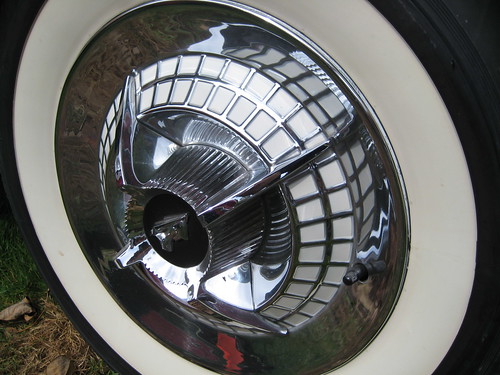Cars
A Beginner’s Guide To Auto Restoration
The term car restoration could refer to something as simple as replacing a beat-up fender, or something as difficult as a full restoration with extensive body work, engine repair, suspension and steering work. Before you start on your project, make a list of everything you’ll need. Go over the vehicle with a fine-tooth comb to make sure you find everything. If the engine doesn’t start, you’ll have to determine what the problem is before you can add it to the list.
Check the Engine

Photo by The Car Spy via Wikimedia Commons
If the engine doesn’t start but does turn over, you’ll have to diagnose the problem. Any number of problems could cause a no start. If the engine clicks, the problem could be a dead battery or a bad starter. Check the battery with a voltmeter. If it doesn’t have 12.5 volts, charge the battery, then try again. If you still have the problem, locate instructions to try to turn the engine over by hand.
If you can rotate the engine, you could have a starter problem. If not, put a few drops of Marvel Mystery Oil in each spark plug hole, and then allow the engine to sit at least 24 hours before trying to turn it by hand. Each manufacturer has specific instructions for turning an engine by hand. Refer to a repair manual to determine how to turn your vehicle’s engine by hand. Repeat if the engine doesn’t turn over. If it does turn over, try to start the engine. You’ll have to take a compression test to ensure the rings didn’t stick. If the compression is low, be prepared to rebuild the entire engine. Thanks to Linn Benton Community College for the tips.
Check the Steering, Tires, Suspension and Brakes

Photo by Hugo90 via Flickr
Using an auto repair manual for your specific vehicle, check the suspension, steering, tires and brakes. Make a list of everything you need. If the brakes are low, add rotors to your list. When you change the pads, you should change or at least turn the rotors so the pads have a smooth surface to adhere to when you apply the brakes. It can be hard to find original tires for your restoration vehicle, but an updated, safer, more efficient set of wheels and tires can be more practical. The same goes for other safety-critical parts.
Check the Body

Photo by Thomas.fanghaenel via Wikimedia Commons
Go over the body to locate all the damage areas. If you are working on a metal vehicle, test every panel with a magnet. If it doesn’t stick where it’s supposed to stick, a previous owner filled the area with body putty or fiberglass. You can get body panels to weld onto the vehicle during your restoration. While this is a bit more difficult than filling the hole with putty or fiberglass, it’s better to weld a new panel into place.
Don’t forget to check the lights, fuel tank, fuel lines, brake lines, door locks, windows, window regulators and other parts on the body.
Good luck!
















Recent Comments